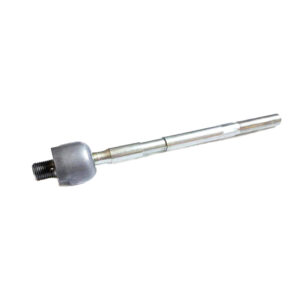February 24, 2024
How does a rack end car contribute to overall vehicle dynamics?
A rack end, also known as a tie rod end, contributes significantly to overall vehicle dynamics by playing a crucial role in steering responsiveness, stability, and alignment maintenance.
Here’s how it impacts vehicle dynamics:
- Steering Responsiveness: The rack end is part of the steering linkage system and connects the steering rack to the steering knuckle or spindle. When the driver turns the steering wheel, the rack end translates this input into lateral movement of the wheels, allowing the vehicle to change direction. A properly functioning rack end ensures precise and responsive steering, enabling the driver to control the vehicle with accuracy and confidence.
- Alignment Maintenance: The rack end helps maintain proper wheel alignment by transmitting steering inputs from the steering rack to the wheels. Proper wheel alignment is essential for ensuring that the tires make optimal contact with the road surface, maximizing grip, and reducing tire wear. A worn or damaged rack end can lead to misalignment, causing uneven tire wear, reduced handling performance, and compromised vehicle dynamics.
- Cornering Stability: During cornering maneuvers, the rack end plays a critical role in maintaining stability and control by facilitating consistent and predictable steering response. It helps ensure that both front wheels turn uniformly, allowing the vehicle to negotiate corners smoothly and maintain its intended trajectory. Properly functioning rack ends contribute to balanced cornering behavior, minimizing body roll and enhancing overall vehicle stability.
- Steering Accuracy: The rack end directly influences steering accuracy by transmitting steering inputs from the driver to the wheels. china rack end car manufacturer Any looseness or play in the rack end can result in imprecise steering, leading to a vague or wandering feel in the steering wheel. A worn or damaged rack end can compromise steering accuracy, affecting the vehicle’s ability to maintain a straight line and navigate curves effectively.
- Suspension Compliance: The rack end contributes to the overall compliance and responsiveness of the suspension system by allowing the wheels to articulate and adapt to changes in road surface conditions. It helps absorb shocks and vibrations transmitted through the steering system, improving ride comfort and reducing harshness. Properly functioning rack ends ensure that the suspension system operates smoothly, enhancing overall vehicle dynamics.
- Driver Confidence: A well-maintained rack end enhances driver confidence by providing predictable and consistent steering feel and response. Drivers can trust that their inputs will be accurately translated into vehicle movement, allowing them to maneuver the vehicle with precision and assurance. This contributes to a more enjoyable and satisfying driving experience, particularly during spirited driving or emergency maneuvers.
In summary, a rack end plays a crucial role in overall vehicle dynamics by ensuring precise steering responsiveness, maintaining proper wheel alignment, enhancing cornering stability, improving steering accuracy, facilitating suspension compliance, and enhancing driver confidence. Its contribution to these key aspects of vehicle handling and control is essential for achieving balanced, predictable, and enjoyable driving dynamics, ultimately enhancing safety, comfort, and performance on the road.


